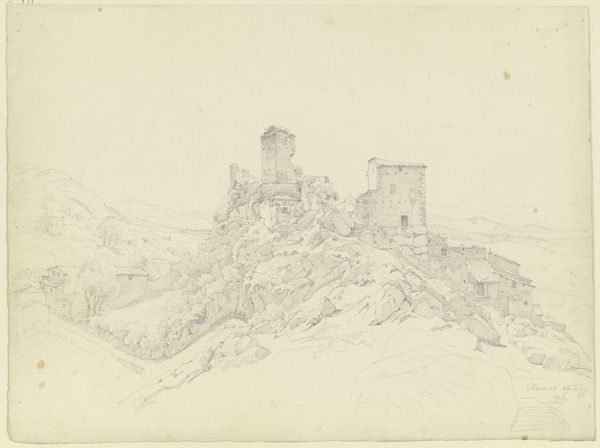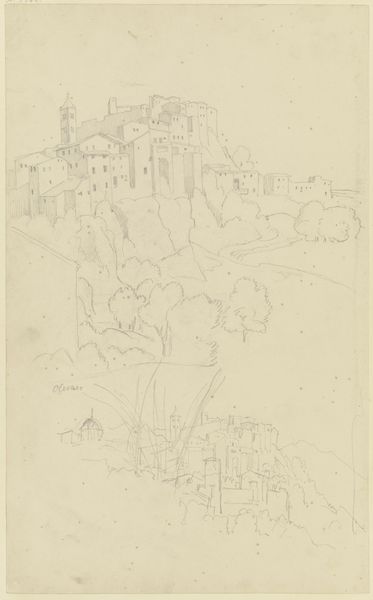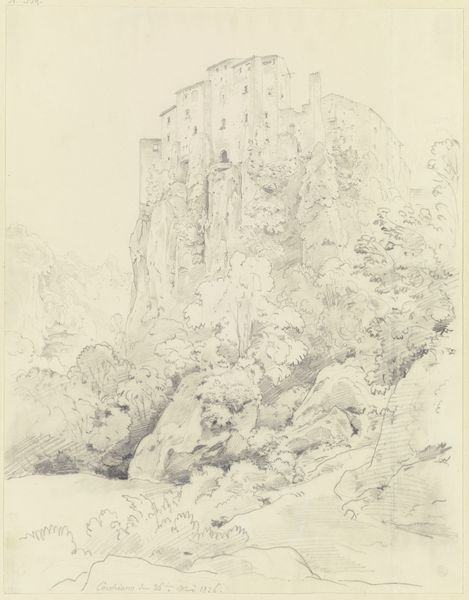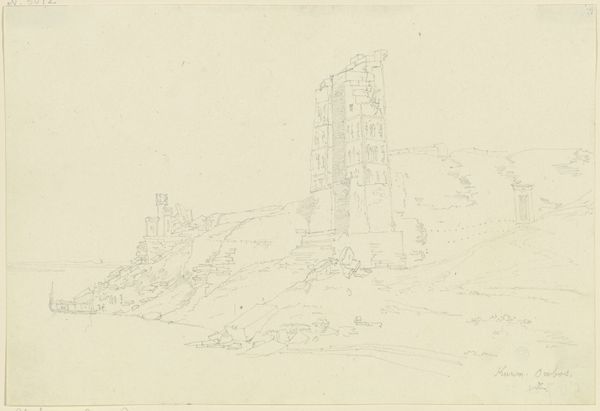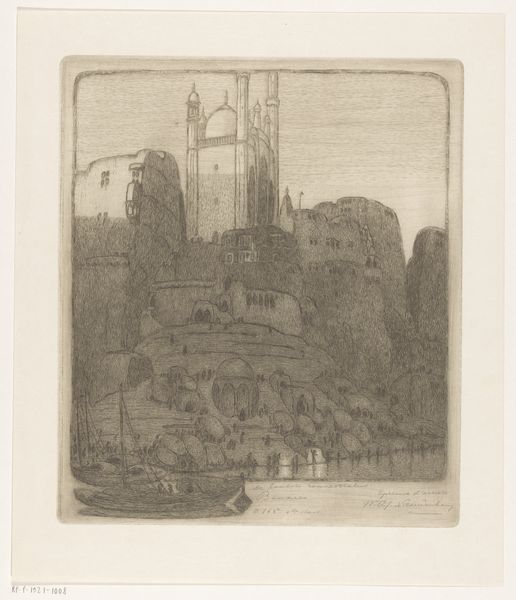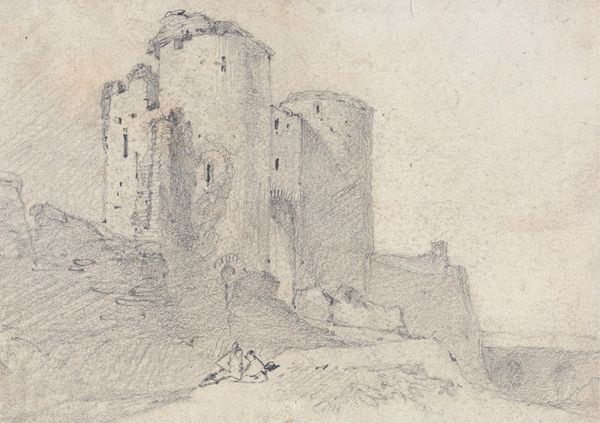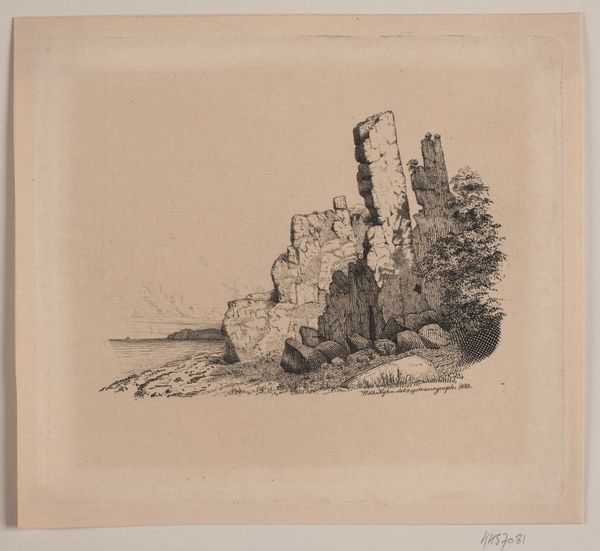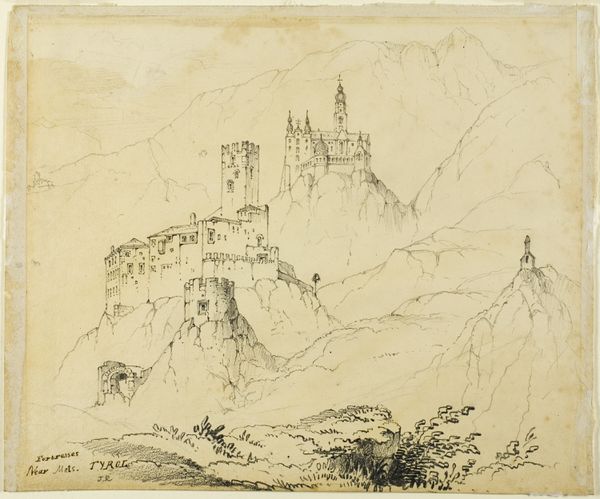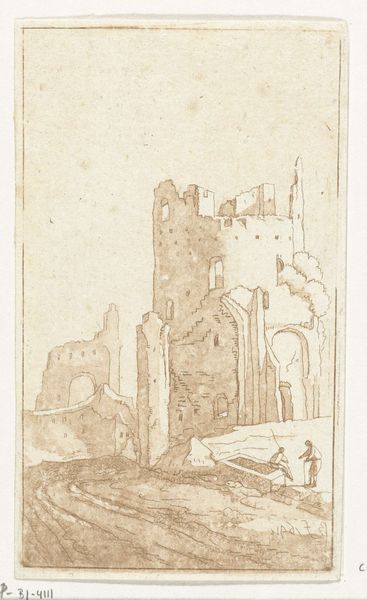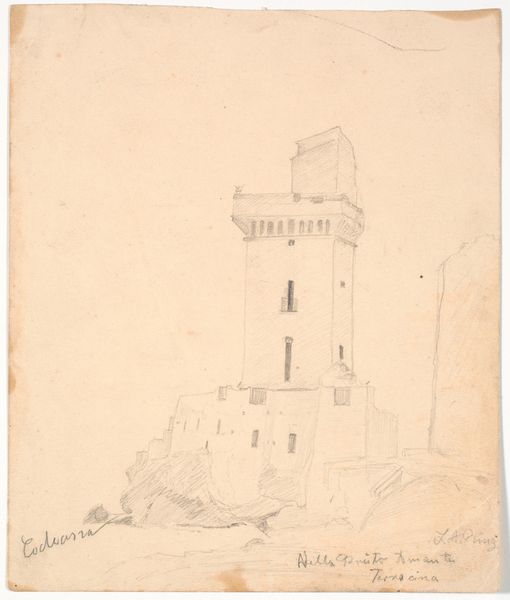
Dimensions: height 210 mm, width 184 mm
Copyright: Rijks Museum: Open Domain
Curator: Here we have Frederik Hendrik Weissenbruch's "Vervallen toren van een kasteel," a pencil drawing from between 1838 and 1887. It currently resides in the Rijksmuseum's collection. Editor: My first thought is how melancholy it is. The crumbling stonework and lack of detail evokes a sense of transience. Curator: The stark composition certainly amplifies that feeling. Note how Weissenbruch uses varying densities of lines to create depth and shadow. The ruined tower dominates the page, its verticality a counterpoint to the gentle slope it rests upon. The interplay of light and shadow almost abstracts the subject, distilling it to its essential form. Editor: I see the evidence of labor in every stroke of the pencil. Think of the quarrying of stone, the hands that meticulously built this structure, only for it to erode slowly back to its elemental state. It reflects the ultimate futility of even the grandest human endeavors. What type of pencil did Weissenbruch likely use to produce such contrast, do you imagine? And was the support handmade, I wonder? Curator: The Romantic painters often focused on nature's power over humanity. This image certainly aligns. It possesses an underlying sublime quality that resonates even in its miniature format. But it's not simply a record of ruin; consider also the positive negative spaces, where emptiness becomes significant. Editor: I am drawn to consider who inhabited this place, and what the communities that relied on this structure endured as it gradually failed. Perhaps it sheltered artisans, who used the resources provided from the surrounding lands? We only view the romantic facade, seldom the stories of material and labor involved. Curator: A pertinent observation! Though formally, one can analyze its formal elegance; the artist skillfully arranges visual weight so the eye meanders satisfyingly from its base to the pinnacle and downward again, locked into place, looping between dark stone and negative void. Editor: Considering the materiality definitely amplifies its sense of longing for a bygone era. The building materials whisper their own forgotten stories, their gradual disintegration embodying both the relentless effects of the weather and of history. Curator: Indeed. These juxtapositions produce such an atmosphere of brooding contemplation. Editor: Ultimately, its success lies in that careful and emotional blend of materials, subject matter, and the implications for the hands both responsible for building, and later capturing, this long-lost monument.
Comments
No comments
Be the first to comment and join the conversation on the ultimate creative platform.
